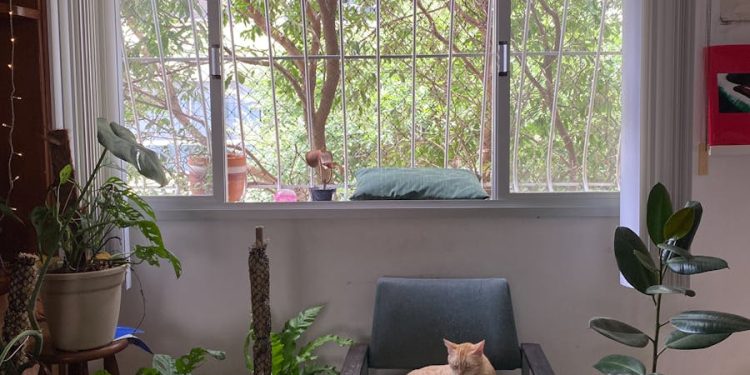A pet-friendly home is more than just a place where pets live; it is a haven where they feel comfortable, happy, and safe. As a pet owner, you want your living space to reflect your love and care for your furry friends while also making sure it remains tidy and welcoming for everyone else. Balancing the needs of your pet with the desire for a clean and organized home can be challenging, but it’s certainly achievable with the right approach. Here are some practical tips to help you maintain a pet-friendly home that works well for both you and your pet.
1. Choose Pet-Friendly Materials and Furniture
The materials you choose for your home can make a big difference when it comes to accommodating pets. Opt for furniture made from pet-friendly fabrics like microfiber, which is durable, easy to clean, and resistant to pet hair. Leather can also be a good choice, as it is less likely to trap hair and can be wiped clean, though it might be prone to scratches. Hardwood, tile, or laminate floors are much easier to maintain than carpets, as they don’t trap pet hair and odors. If you do have carpets, consider using low-pile versions, which are easier to clean and don’t hold onto fur as much as high-pile varieties.
2. Keep Cleaning Supplies Handy
Pets can be messy, and accidents are bound to happen, so having cleaning supplies readily accessible is key to keeping a pet-friendly home. Enzyme-based cleaners are excellent for dealing with pet accidents, as they help eliminate stains and odors rather than just masking them. Keep a vacuum cleaner that’s designed to handle pet hair and dander close at hand, ideally one with a HEPA filter. Regular vacuuming will help reduce allergens and keep your home clean. Lint rollers and pet-specific cleaning wipes are also useful for quick clean-ups and keeping surfaces free of pet hair.
3. Create Dedicated Spaces for Your Pet
Creating designated areas for your pet can help keep the rest of your home organized. Set up a specific space for your pet’s bed, toys, and food dishes. This not only helps contain pet-related messes to one area but also provides your pet with a sense of security and consistency. If your pet has a favorite spot, place their bed or blanket there so they have a cozy retreat. For cats, consider adding vertical spaces like shelves or cat trees, which allow them to climb and observe their surroundings while giving them a designated place to scratch and play.
4. Protect Your Furniture and Floors
Pets can cause wear and tear on your furniture and floors, but there are ways to minimize the damage. Use washable slipcovers or throws on your couches to protect against pet hair, scratches, and dirt. Area rugs with a rubber backing can help protect your floors from claw marks and are also easier to clean than wall-to-wall carpet. If your pet has a habit of scratching furniture, consider using deterrent sprays or placing scratching posts nearby to redirect their behavior. Regularly trimming your pet’s nails can also help prevent accidental damage to floors and furniture.
5. Manage Pet Hair Effectively
One of the biggest challenges of maintaining a pet-friendly home is dealing with pet hair. Regular grooming is key to keeping shedding under control, especially for breeds that are prone to heavy shedding. Brush your pet regularly to remove loose hair before it ends up on your furniture and floors. Using a pet grooming glove can make the process more enjoyable for your pet while also reducing shedding. Investing in a high-quality vacuum cleaner designed for pet hair can make a world of difference in keeping your home clean. Additionally, placing washable rugs or mats in areas where your pet frequently lies down can help catch loose fur.
6. Keep Your Pet Clean
Keeping your pet clean is not only important for their health but also helps maintain a tidy home. Regular baths, brushing, and paw cleaning can go a long way toward keeping dirt, dander, and odors at bay. Make it a habit to wipe your pet’s paws after they come in from outside, especially if they’ve been in the mud or grass. This helps prevent them from tracking dirt into your home. Using a pet-safe dry shampoo between baths can help keep your pet smelling fresh without the need for frequent full baths.
7. Organize Pet Supplies
Keeping your pet’s supplies organized can help reduce clutter and make your home more pet-friendly. Store food, treats, grooming tools, and toys in clearly labeled bins or containers. If you have limited space, consider using stackable storage bins or a designated cabinet to keep everything in one place. Having an organized system makes it easier to find what you need quickly and keeps your living space clutter-free. Toy baskets are also great for keeping toys in one area, and some pets even enjoy learning to “tidy up” by putting their toys away, adding a fun activity to your routine.
8. Minimize Odors
Pets can sometimes bring unwanted odors into the home, but there are several ways to keep your space smelling fresh. Regularly washing your pet’s bedding, blankets, and soft toys can help reduce odors. Using an air purifier with a HEPA filter can help eliminate pet dander and odors, improving overall air quality. Consider using pet-safe air fresheners or essential oil diffusers to keep your home smelling pleasant. Additionally, cleaning litter boxes daily and keeping them in a well-ventilated area can help control odors if you have cats.
9. Provide Enrichment for Your Pet
A pet-friendly home isn’t just about cleanliness—it’s also about creating an environment where your pet can thrive. Providing enrichment activities can help keep your pet mentally and physically stimulated, reducing boredom-related behaviors like chewing or scratching. Interactive toys, puzzle feeders, and regular playtime can all contribute to a happy pet. Cats, in particular, benefit from vertical spaces and hiding spots where they can climb, scratch, and observe their surroundings. For dogs, consider setting up an indoor play area or obstacle course for days when outdoor exercise isn’t possible.
10. Be Mindful of Hazardous Items
Pets are naturally curious, and they can sometimes get into things that aren’t safe for them. Make sure to pet-proof your home by keeping hazardous items out of reach. Store cleaning supplies, medications, and any potentially toxic foods in cabinets or on high shelves. Be cautious with houseplants, as some can be toxic to pets—make sure the plants in your home are safe for your furry friends. Using childproof latches on lower cabinets can help keep curious pets out of places they shouldn’t be.
Creating a Pet-Friendly Garden
If you have outdoor space, consider creating a pet-friendly garden that allows your pet to enjoy the outdoors safely. Make sure your garden is securely fenced to prevent escapes. Choose pet-safe plants that won’t harm your pet if they decide to nibble on them. Creating shaded areas is also important, especially for dogs who may want to rest outside during warm weather. Providing a designated digging spot for dogs can help prevent them from digging up your garden beds, giving them an outlet for their natural instincts.
Finding Balance for a Happy Home
Maintaining a pet-friendly home is all about finding the balance between meeting your pet’s needs and keeping your space clean and comfortable. By choosing pet-friendly materials, staying on top of cleaning, and creating a space where your pet feels secure and engaged, you can create a home environment that works well for everyone. With a little effort and planning, it’s possible to have a beautiful, organized home that both you and your pet can enjoy.









Discussion about this post